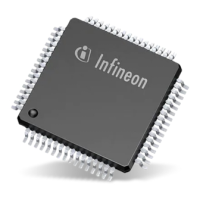Introduction to Digital Power Conversion
XMC4000/1000 Family
Comparison of Power Conversion Methods
Application Guide 11 V1.0, 2015-01
2.3.2.1 Analog Switch Mode Controllers
Traditional Analog Controllers have a significant BOM (Bill of Materials) list of OpAmps, comparators,
filters, and so on. They cover just a limited range of topologies and do not adapt autonomously to
condition changes in run-time. Form factor can be poor and reusability is limited, but they are fast and
well known.
Table 2 Properties of Analog Controllers
Do not adapt to new conditions during run-time
Sensitivity of parasitic effects and ageing
Limited range of topologies
Standard discreet components
Narrow input / load range with efficiency
2.3.2.2 Digital Switch Mode Controllers
Digital controllers are flexible, with a wide load / input range, and sophisticated reactions to condition
changes during run-time through multi-control loops. They are reconfigurable by software and can
connect to a network / HMI. A smart system can predict ageing or process variations, enabling
scalability and portability of IPs.
Digital Controllers – Positive properties
Cost is higher and complexity is higher too, but there are many positive properties:
Highest efficiency over wide load and input range
Sophisticated start-up algorithms
Overload condition reactions
Auto-switch between power modes (CCMCRMDCMBurst)
Programmable / configurable by software
Multiple control loops are possible
Correct real-time performance
Prediction of system behavior
Reduction of parasitic effects
Scalable for wider ranges
IPs are easily portable: lowhigh end
Fast time to market
Sophisticated reactions to events
Communication and HMI feature

